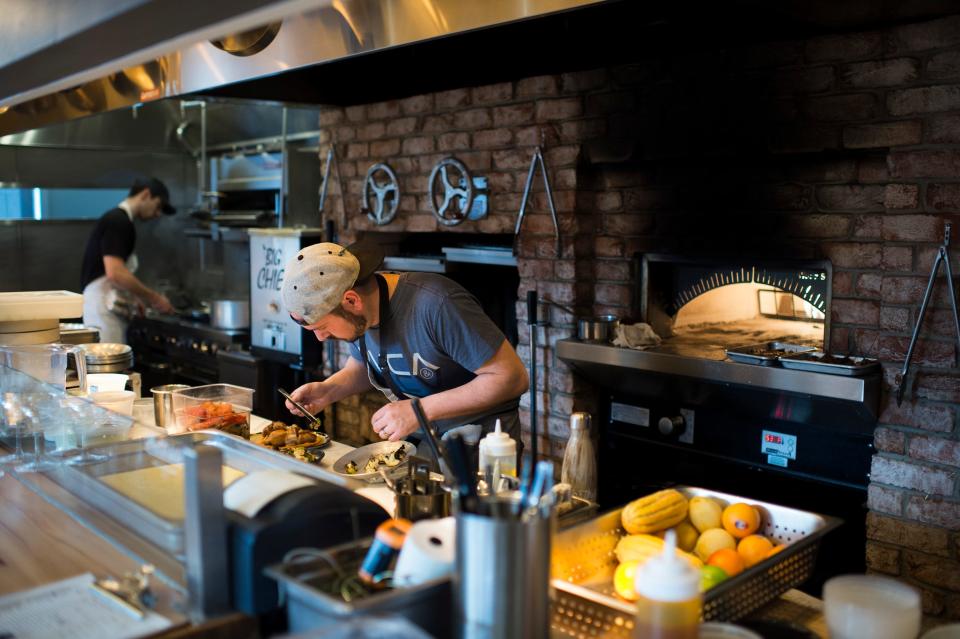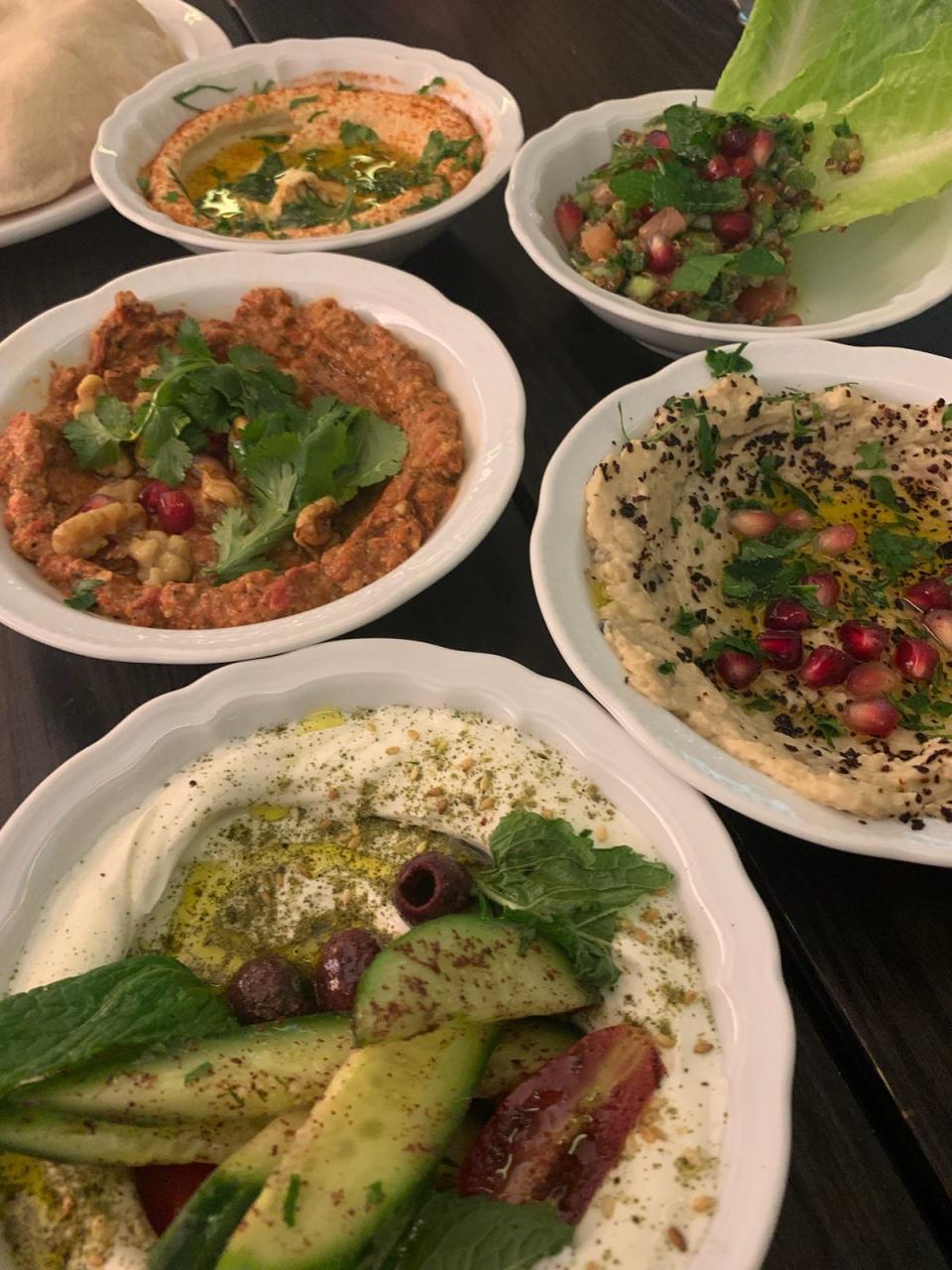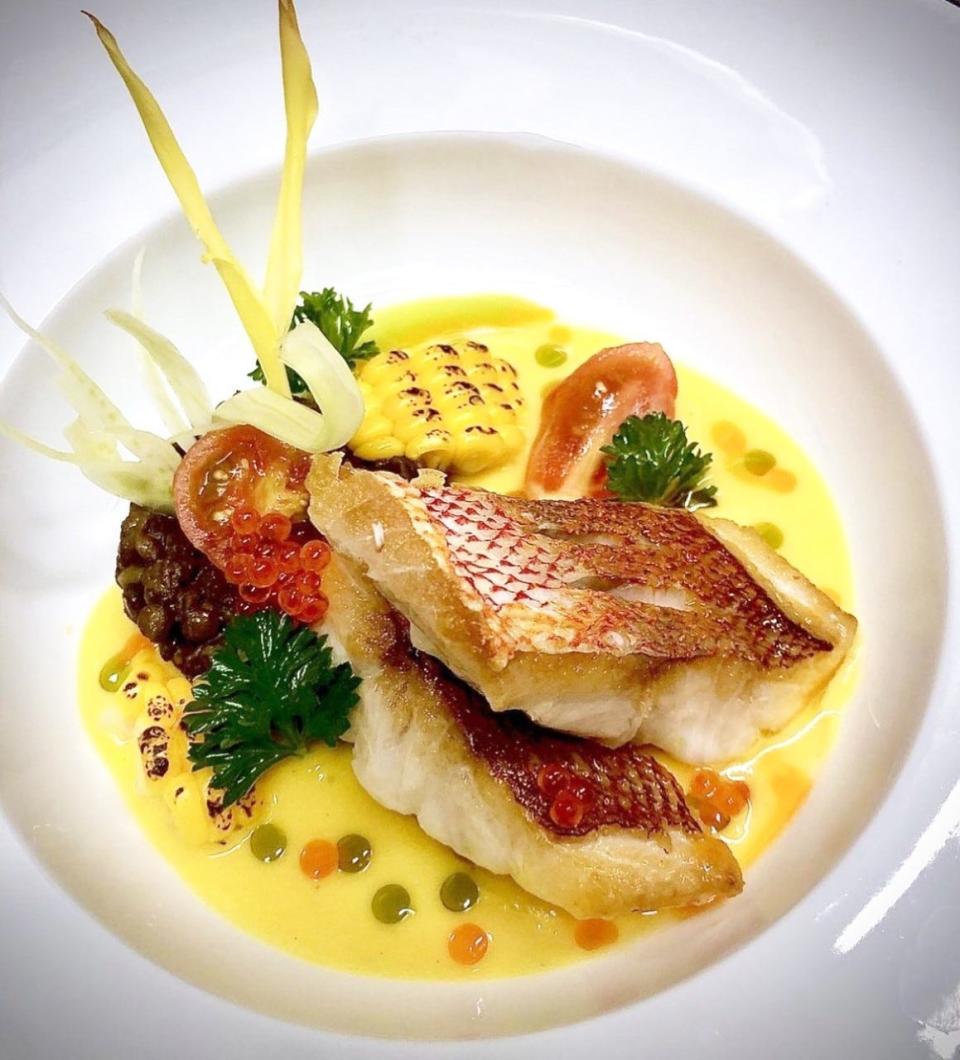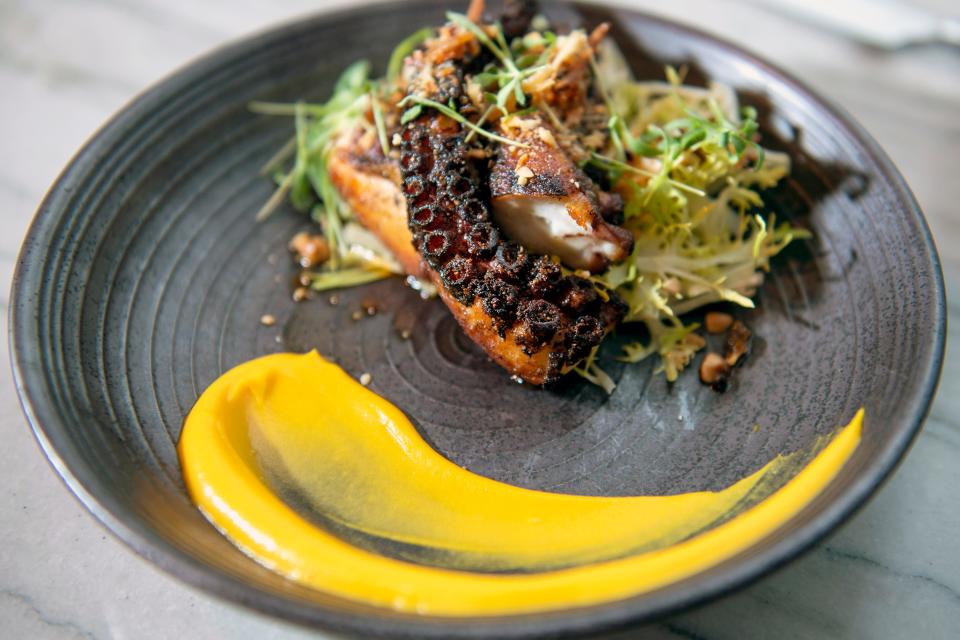Why your favorite local restaurant might throw away its menu this year
It was January when chef Dominic Piperno finally hit the wall.
His wood-fired South Jersey restaurant, Hearthside, ranks among the most acclaimed in the state. "Bon Appetit" named the Collingswood restaurant among the best in the country in 2018. The food press turned somersaults over the restaurant's wagyu carpaccio and wood-fired everything.
But in January, Piperno was at a breaking point. After two pandemic years of short staffing and a broken supply chain, Hearthside was down to just four employees in the kitchen. They'd just lost one line cook to California and another to a “regular” day job. Piperno worked each night till the wee hours of the morning, then came back just after dawn.
He looked up at his sous chef.
"This isn’t sustainable,” he said. Let’s stop. Let’s catch our breath.
Fresh tastes:Like poke bowls, tacos, ice cream and charcuterie? 4 new Delaware shops & restaurants
Piperno looked across the river to Philadelphia, and its newfound bounty of “supper club” restaurants, and he saw the answer that could save his restaurant: They could throw away their menu.
And so they did.
On Feb. 15, Hearthside joined a growing number of restaurants across the region and across the country and ditched à la carte service. The restaurant transformed itself, serving only multicourse prix fixe meals determined in advance by the chef.

Diners no longer choose their food. Instead, the entire menu changes once every two weeks. One dinner might be Latin American-inflected steak and oysters, while the next might feature a tour of Mediterranean flavor. Prices for multicourse meals range from $70 to $125.
For Piperno, scaling back to a single menu for all diners each night means he can run his whole restaurant with a small crew, pay them better and allow them to work fewer hours. And he can include dishes that would have been previously unthinkable, such as house-cured duck prosciutto or laborious housemade pastas he’d learned to create in Italy.
In the process, Piperno revitalized his excitement for the restaurant – and for what was possible for himself as a chef.
“It was one of the most bittersweet moments of my life,” Piperno said. “I felt like I was closing Hearthside. But at the same time, I had all the jitters of opening up a new restaurant.”
Restaurants changing to prix fixe menus all over America after the pandemic
Across the country, and from rural Pennsylvania to the Jersey Shore, plenty of other restaurants are doing the same.
Some of Philadelphia’s most renowned restaurants, whether Israeli destination Zahav or Southern-inflected River Twice, have moved from à la carte service to fixed menus since the pandemic. Philly Lebanese spot Suraya turned its popular brunch service into a mandatory three-course meal.

Alongside maitake mushrooms and TikTok, the annual hospitality industry report from marketer AF&Co. listed affordable tasting menus as one of the most important restaurant developments of 2023.
The reasons, in part, are simple: labor and food costs.
“The short answer is that everything’s too expensive nowadays. It’s what we have to do,” said chef Blake Weisman at another Collingswood restaurant, Zeppoli, owned by Joey Baldino, who has multiple James Beard nominations and also owns the private Palizzi Social Club in South Philadelphia.
Zeppoli added takeout service during the pandemic but now also reserves seating for diners who take part in a three- or four-course Sicilian-inspired tasting menu. (Palizzi offers an à la carte menu but navigated the early stage of the pandemic with a prix fixe menu and outdoor seating.)
Top restaurants:Which South Jersey chefs earned James Beard Foundation semifinalist recognition?
Without moving to prix fixe, Weisman said, Zeppoli couldn’t pay their staff well enough to keep them. The restaurant, quite simply, “wouldn’t work.”
Prix fixe restaurant menus more than just a short-term trend
Tasting menus are a trend that will continue, said Hudson Riehle, vice president of research at the National Restaurant Association.
“It’s not a fad,” he said.
The idea of set menus is far from novel, Riehle said. After all, the Happy Meal is just fast food’s answer to prix fixe. And high-end tasting menus have gone in and out of fashion for decades.
What’s new, he said, is that many restaurants are making this shift because of an economic environment that’s forced their hand. The pandemic has meant price spikes, supply chain disruptions and labor shortages as workers leave the service industry.
With predetermined menus, chefs are able to reduce food waste, avoid food items such as chicken or eggs that see sudden price jumps, and serve customers with a tighter kitchen staff.
“Prix fixe menus offer predictability for both the consumer, as well as the restaurant, in an uncertain world,” Riehle said.
Tasting menus a route to creativity and ambition
For some chefs, the calamity of the pandemic granted them the courage to make the restaurant they’d always wanted.
At West Chester, Pennsylvania, restaurant Andiario, about a half-hour north of Wilmington, Delaware, chef Anthony Andiario switched his Italian-influenced farm-to-table restaurant to prix fixe menus out of necessity during 2020. But by the next Valentine’s Day, he realized he never wanted to go “back to normal.”
Andiario already had received loyal diners and orgiastic acclaim, both local and national. Even before the pandemic, the restaurant was taking over his life.
“It was spinning out of control,” Andiario said. But with time to reflect afforded by the pandemic, he was able to “rein it back in,” and remember why he wanted to start cooking in the first place.
He now makes new menus weekly, responding to what local farmers have in stock and what’s in season, whether chanterelle mushrooms in mid-July or serpentine squash in the fall. He and his partner, Maria van Schaijik, are planting their own crops, including tiny South American currant tomatoes that pop sweetly in your mouth. For poussin chickens on one menu, he might talk to a farmer weeks in advance about raising a flock.
New at the Beach: Hammerheads Dockside closes after 10 years, Big Fish Restaurant Group to take over
And in the process, he’s received some of the greatest acclaim of his career, whether Beard nominations or laurels from the New York Times. Each month on the 20th, his reservations for $80 dinners now sell out so quickly “it’s a little embarrassing,” he said.
Since the pandemic, many of the region’s most ambitious new restaurants were conceived as prix fixe from the start. Indeed, both new Philadelphia restaurants listed on Esquire’s 2022 list of the best in America, Her Place and Roxanne, are no-menu, small-plate supper clubs whose food arrives as an intimate surprise.

At French restaurant Provence, which opened in 2021 in Cape May Courthouse, just north of the South Jersey beach resort, owners Andrew Bares and Kelly Lavorgna saw a multicourse prix fixe experience as a showcase for culinary ambition. But it also was a business model that made sense.
“It just so happened that this model fits into the realities of today, in terms of food cost and reducing waste, getting local product and showcasing it,” Bares said.
Will more restaurants in our region go prix fixe?
Those who dine out frequently and pay attention to culinary trends may wonder if they'll see some of their favorite restaurants in places like Wilmington or Lewes, Delaware, or New Hope, Pennsylvania, cease à la carte offerings.
But jettisoning your menu in favor of tasting menus also can pose a big risk. Many diners balk at the cost and commitment of a four- or seven-course meal, say dining scene observers.
“It’s not the $15 you’d pay for one entrée. It’s $60 or $70 and above,“ said New Jersey-based food and wine writer Robin Shreeves. “You’ll want to know that you’re going to get well-made food.”
While Shreeves, who used to write for the Courier-Post in Cherry Hill, New Jersey, regularly seeks out tasting menus from chefs she esteems, she would balk before crossing the threshold of prix fixe-only restaurant from a chef whose reputation she’s unsure of.
Even chefs with loyal followings are nervous about making such a radical move.
“Some of our guests are confused, and some are excited, and some are mad and some are happy,” said Hearthside chef Piperno, two days into his new menu. “So it's kind of a weird feeling right now.”
To make sure his fans still get to eat their favorite dishes, he plans “classics” tasting menus with favorite signature dishes, whether coconut curry mussels or wood-roasted prawns,

This is doubly true when the dining model is unfamiliar to customers in the region, said chef Scott Morozin. When he started his ambitious Kennett Square, Pennsylvania, BYOB Verbena in 2018 as tasting-menu-only, he was nearly alone among nearby restaurants.
Building trust, and regular customers, took patience.
“It takes time for people to say, ‘I don’t need the menu. You have carte blanche. Do whatever you want,” Morozin said.
Delaware restaurants have been much less keen to dip their toes in the water, said Wilmington chef Tyler Akin, even as the economic and culinary arguments for doing so remain the same. His own restaurant, Le Cavalier at the Hotel Du Pont, has toyed with multicourse menus mostly during special occasions and the holiday season.

The Wilmington area’s sense of itself as a destination for ambitious dining is relatively recent, he said, even with Beard-nominated restaurants such as Bardea and The House of William and Merry. A tasting menu restaurant would be an act of courage.
Delaware food acclaim:Chefs named as semifinalists for prestigious James Beard Awards
But this situation could change any second, he said, when the right chef decides to take the plunge.
Chefs in Wilmington and elsewhere are looking on with keen interest as nearby Hearthside makes its move to prix fixe only, Akin said.
“Dominic is a really thoughtful guy,” Akin said. “And they are really taking the lead right now. … Nobody knows whether that kind of concept would survive or flourish in Delaware. Until somebody actually takes a trust fall and tries it.”
Matthew Korfhage is a Philadelphia-based reporter for USA Today Network.
This article originally appeared on USA TODAY NETWORK: Why are restaurants changing to prix fixe menus since the pandemic?

